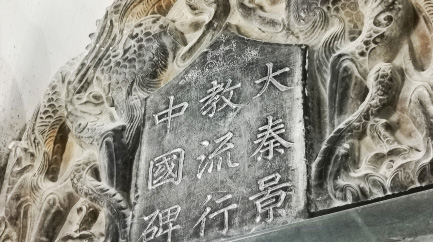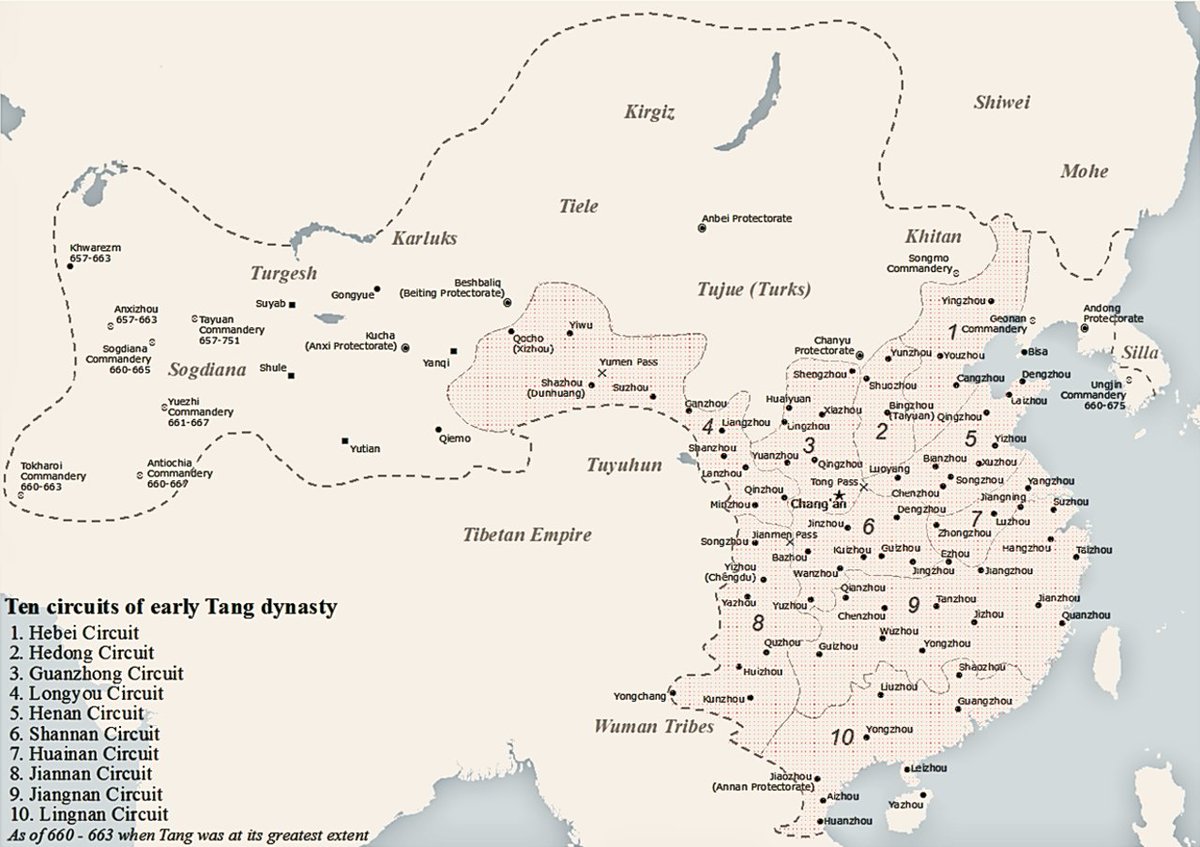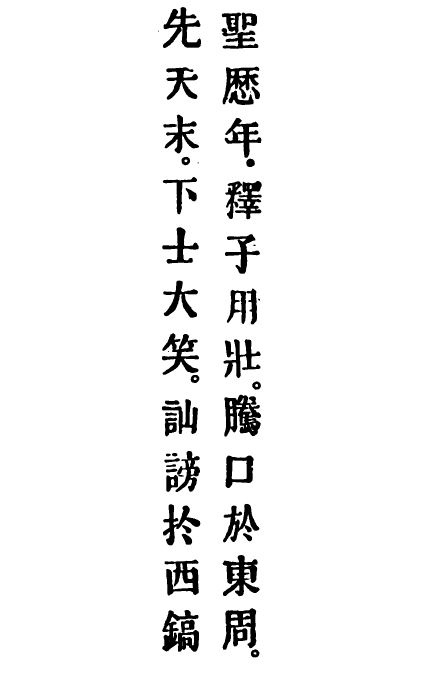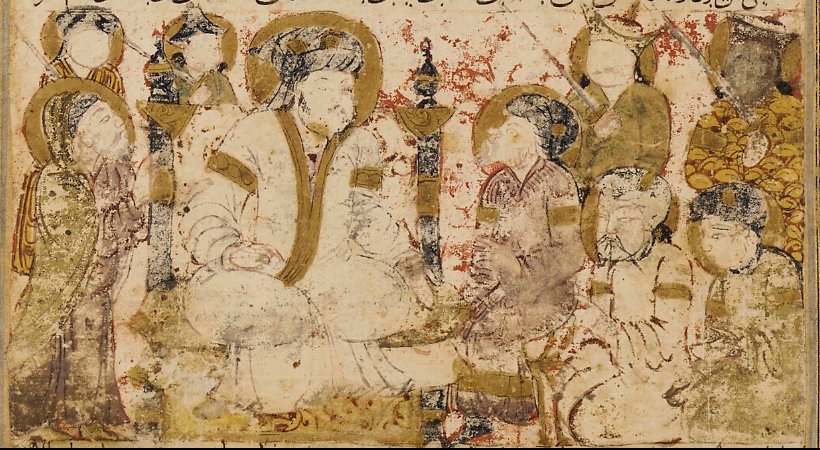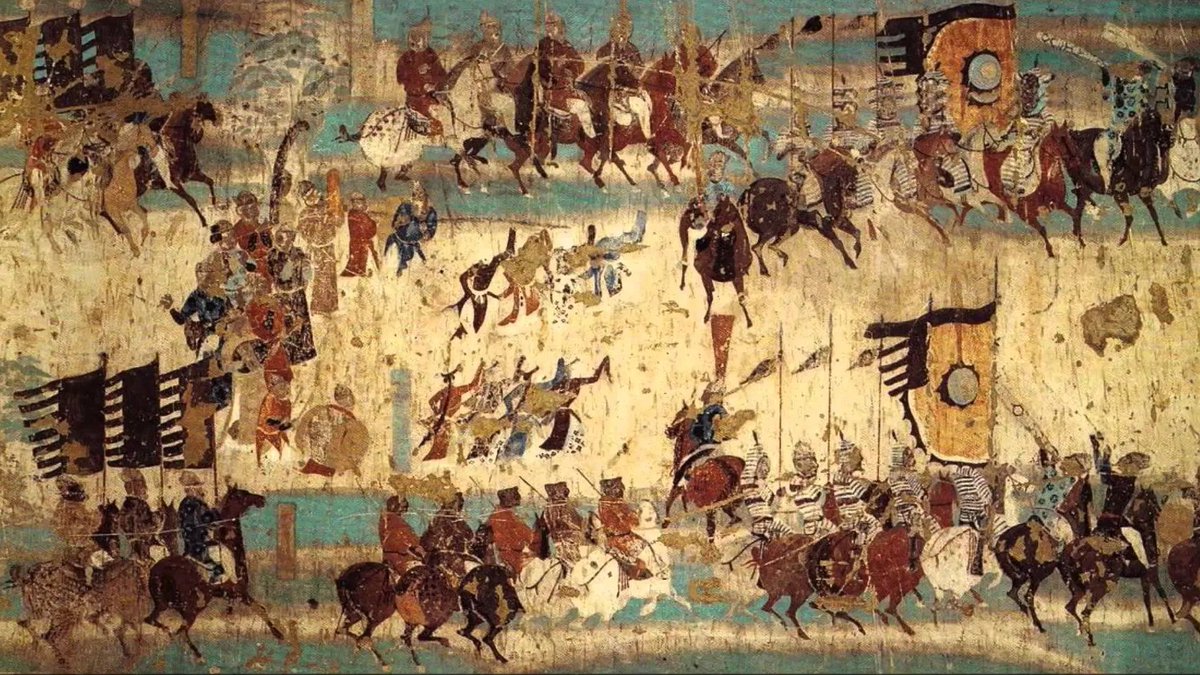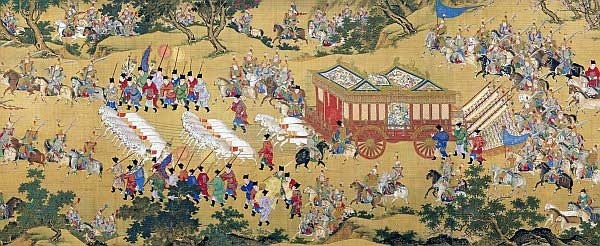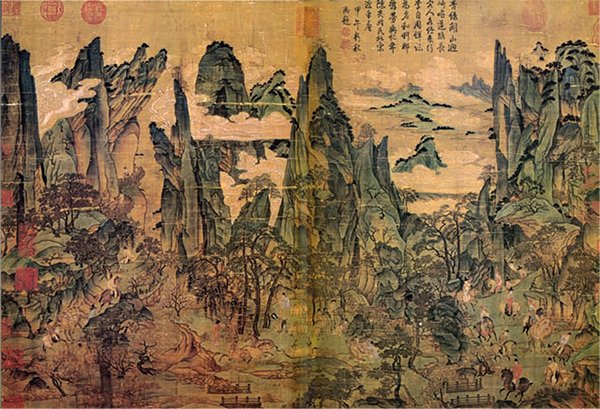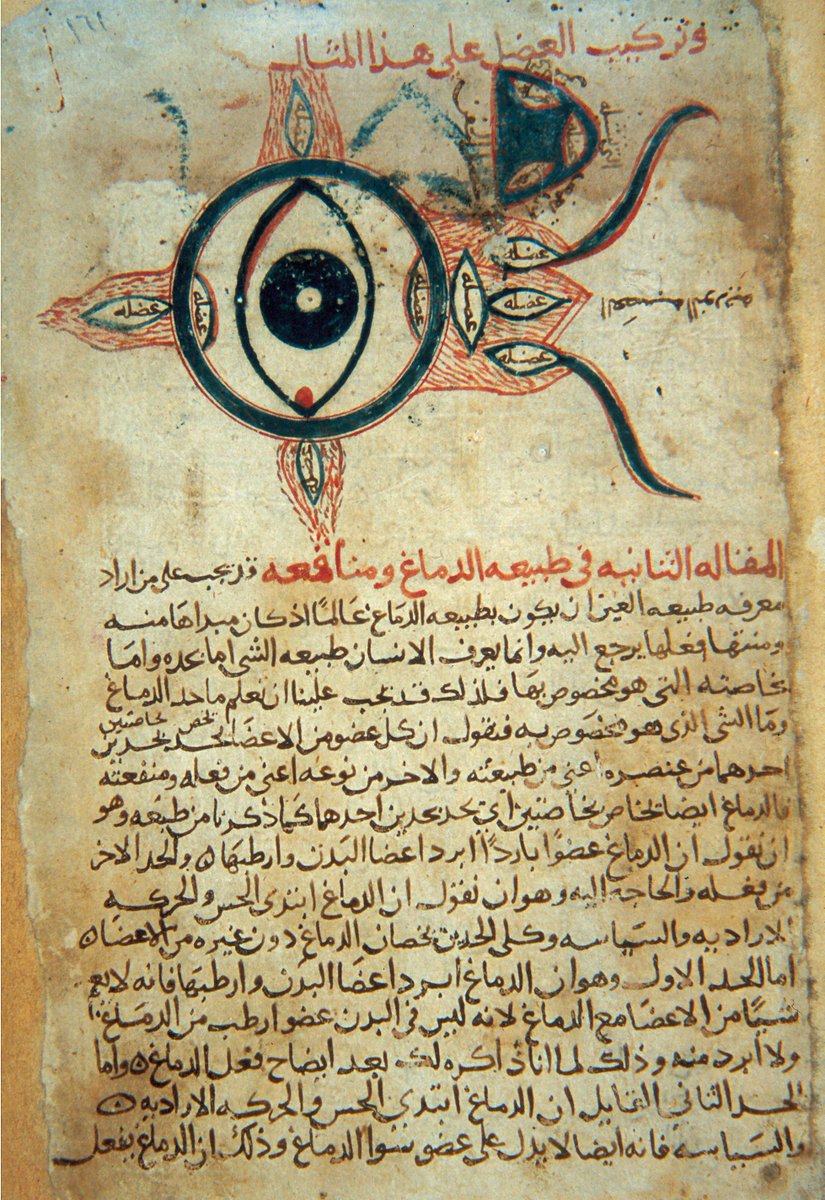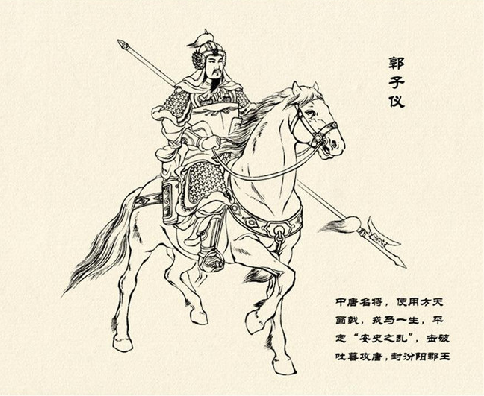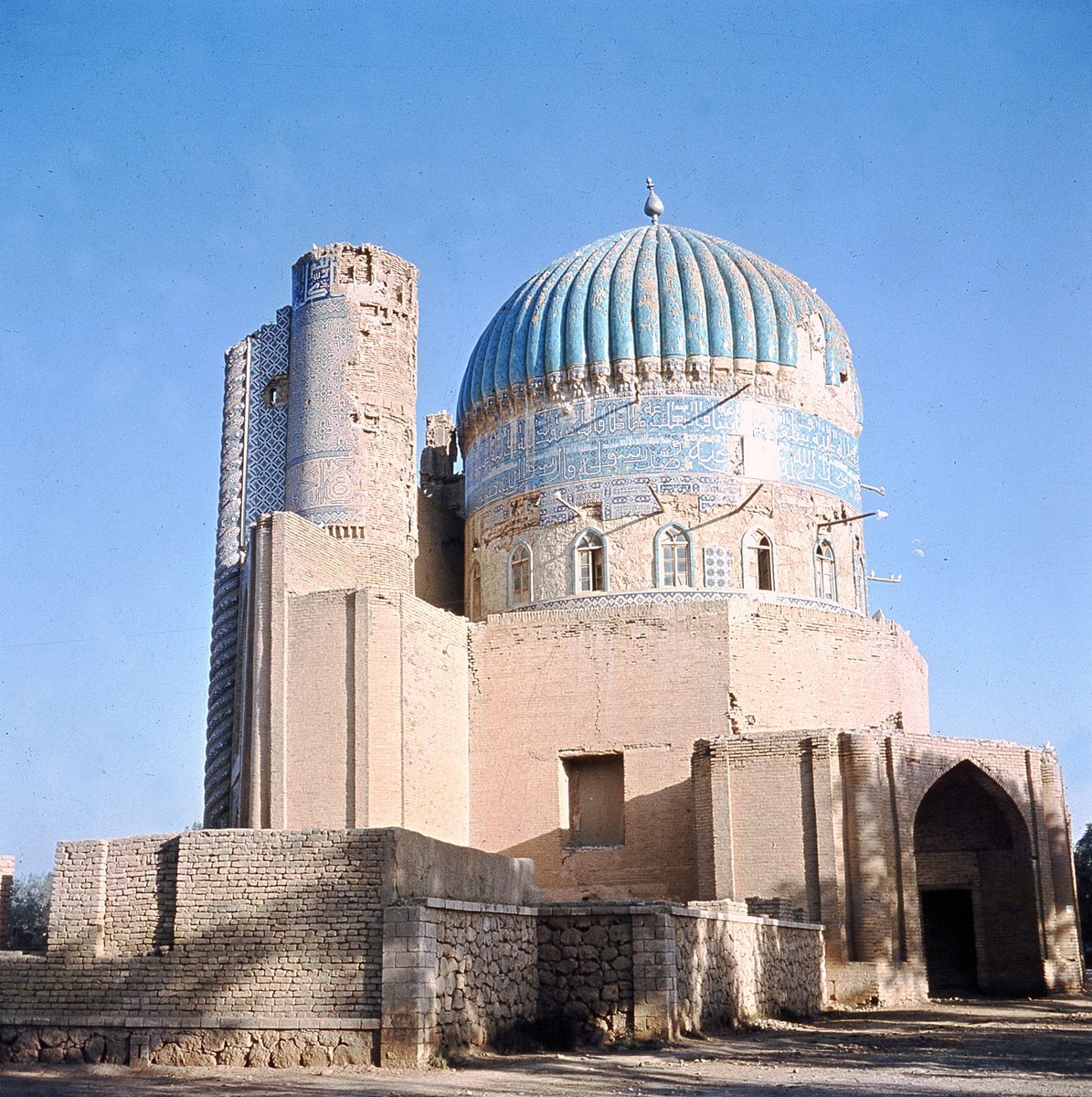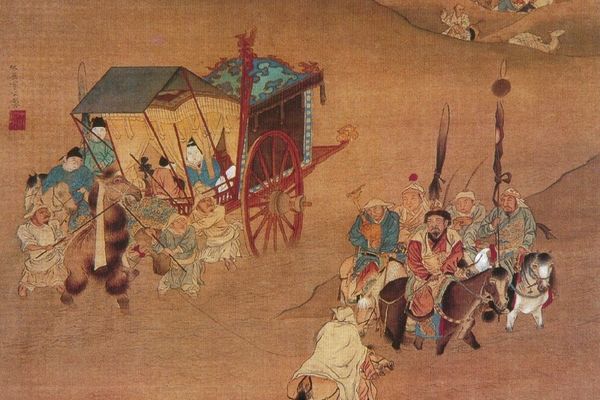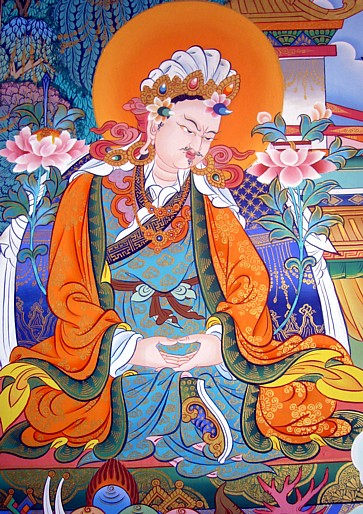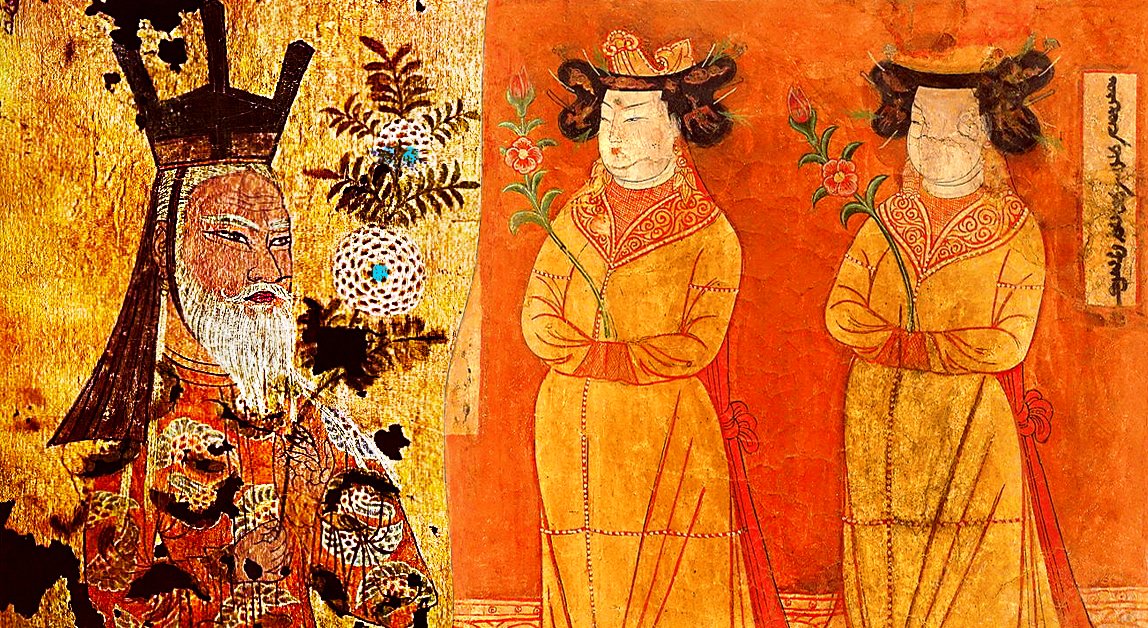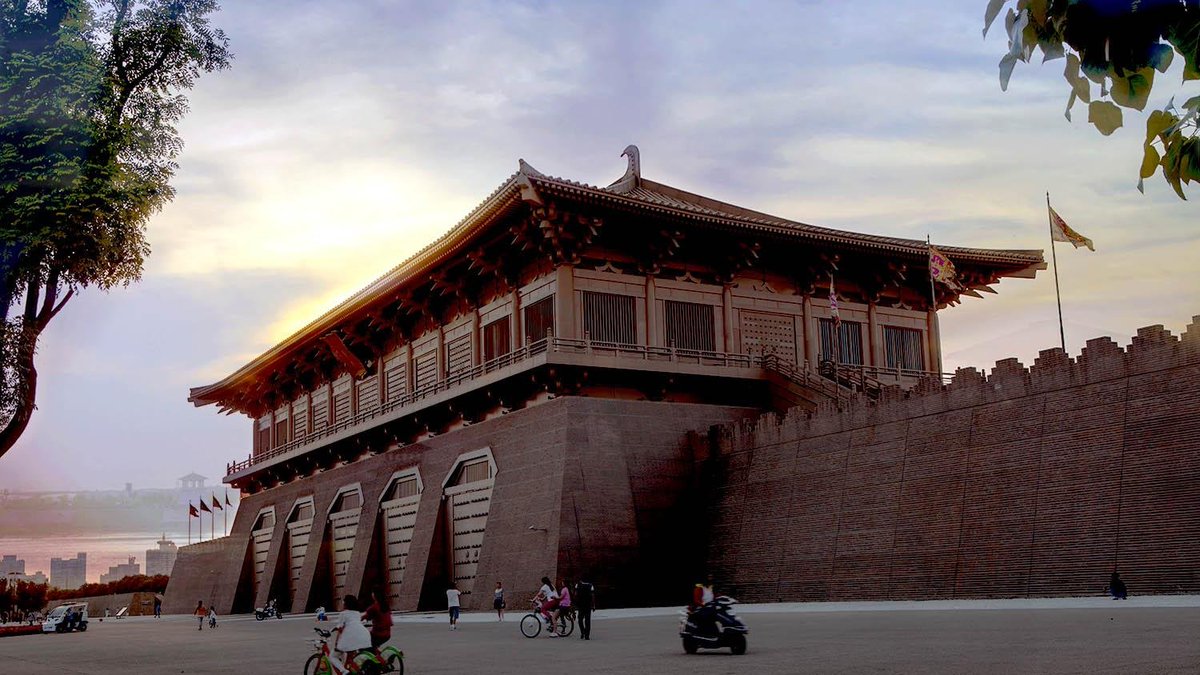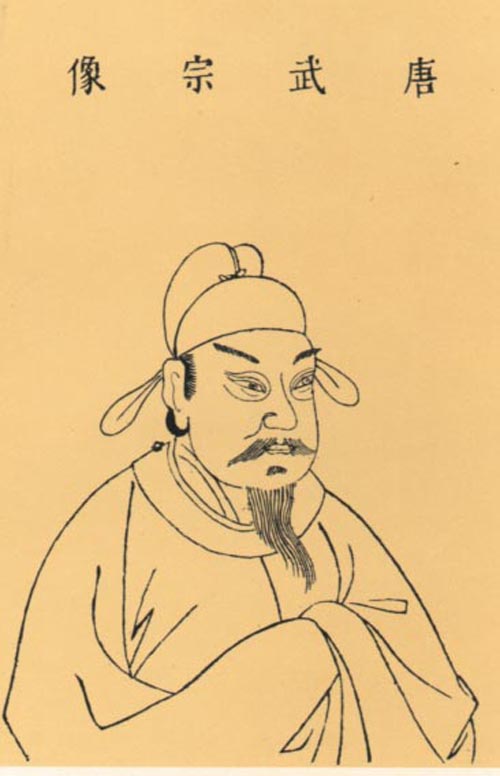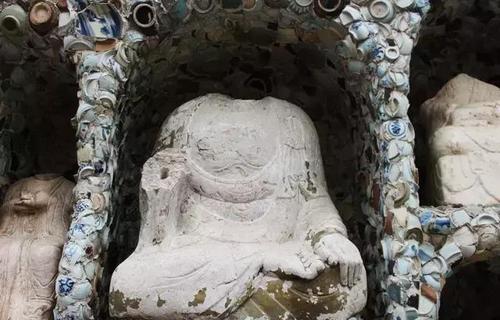Hello, I'm @ChenHuailun and I'll be continuing to tweet about Christianity in Tang China. Yesterday, I introduced the Xi'an stele and its narration of Christianity's entrance into Chang'an. Today I'll continue the story and add some of its context. ~ahc #jingjiao /1
After the the Christians built a church in Chang'an in 638, they also set up parishes in the eastern capital of Luoyang and Lingwu. However, it wasn't all smooth sailing for them. ~ahc #jingjiao /2
'In 699, the Buddhists...raised their voices in the Luoyang. In 713, some low fellows ridiculed and slandered in Chang'an.'
Buddhist and Daoist attacks occurred sporadically, but the stele boasted of the rebuilding of churches due to imperial favour. ~ahc #jingjiao /3
Buddhist and Daoist attacks occurred sporadically, but the stele boasted of the rebuilding of churches due to imperial favour. ~ahc #jingjiao /3
Fast-forward some decades and we reach the tumultuous 750s. The general Abu Muslim launched an open revolt against the Ummayyads, eventually defeating the caliph Marwan II at the Battle of Zab and inaugurated the beginning of the Abbasid caliphate in 750. ~ahc #jingjiao /4
The next year, Abbasid and Tang forces clashed at the Battle of Talas. The name change of Chinese churches from 'Persian' to 'Daqin' could perhaps be due to the realisation that the Arabs, not the Sasanians, were now the western empire for China to deal with. ~ahc #jingjiao /5
Also in the 750s was the rebellion of the Gokturk-Sogdian general, An Lushan (756–63). One of the bloodiest conflicts in Chinese history, it marked a permanent change in Tang institutions and Chinese society. ~ahc #jingjiao /6
The world was very different after the 750s for the Church of the East. The caliphate had moved to Baghdad, just up the river from the seat of the catholicos, and the Tang had now been shaken to its very foundations. ~ahc #jingjiao /7
In the Abbasid empire, East Syrian Christians enjoyed imperial patronage as royal translators, physicians, and even secretaries to Muslim rulers. ~ahc #jingjiao /8
In the Tang, Christians contributed to pacifying the An Lushan Rebellion. The stele writes that the priest Yisi helped the An Lushan rebellion, aiding the legendary general Guo Ziyi, and was awarded a number of titles by the emperor. ~ahc #jingjiao /9
Now I'd like to pause on the figure Yisi. There's good reason to dismiss many of the fantastic descriptions of the stele, but this figure may have aided in the suppression effort. Emperor Suzong indeed recruited soldiers from Lingwu, which was a church parish. ~ahc #jingjiao /10
Furthermore, according to Prof Zhang Xingfu, Yisi may have been from Balkh, Tocharistan, and Tang records write that states from the 'Western Regions' were stationed at Shuofang, where Guo Ziyi was commander. ~ahc #jingjiao /11
Following the An Lushan rebellion, the Tang remained unstable and decentralised. Military governors rose up and set up their own states. One of these, named Zhu Ci, declared himself 'Emperor of Daqin' just two years after the Xi'an stele was erected. ~ahc #jingjiao /12
The Tibetan empire under Trisong Detsen took over the western provinces of Gansu and Ningxia, even took Chang'an itself in 763. ~ahc #jingjiao /13
The Uighur khaganate also expanded by aiding the Tang in suppressing the rebels and driving out the Tibetans. Tibetan and Uighur expansion cut off the Tang from Central Asia. ~ahc #jingjiao /14
This is where the Christians came in. They 'worked together to repair the imperial net.' As R. Todd Godwin puts it, their 'inter-imperial capabilities' from multilingualism and prominence along the Silk Road may have provided diplomatic channels for the Tang. ~ahc #jingjiao /15
East Syrian Christians may have also contributed to medicine. Yisi is mentioned in the stele as a physician, and Daqin is described as producing good physicians. The prominence of medical Christian families in the Abbasid court speaks to some truth in this. ~ahc #jingjiao /16
Christianity eventually fell out of favour in the reign of Wuzong during his Anti-Buddhism Campaign of 843. For economic and nativist reasons, Wuzong not only persecuted Buddhism, but also eliminated Zoroastrianism, Manicheanism, and Christianity from China. ~ahc #jingjiao /17
And that's the end of our story. East Syrian Christianity proceeded to survive in the Western Xia and Uighur Khaganate. But Christians in China disappear from the historical record until the Mongol Yuan Dynasty (1271-1368). ~ahc #jingjiao /18
In the coming days, I'll be tweeting about other East Syrian Christian documents in Chinese, translation, and the art and history of the Xi'an stele. Thanks! ~ahc #jingjiao /19

 Read on Twitter
Read on Twitter